The Bomb: An interview with the team behind the revolutionary documentary
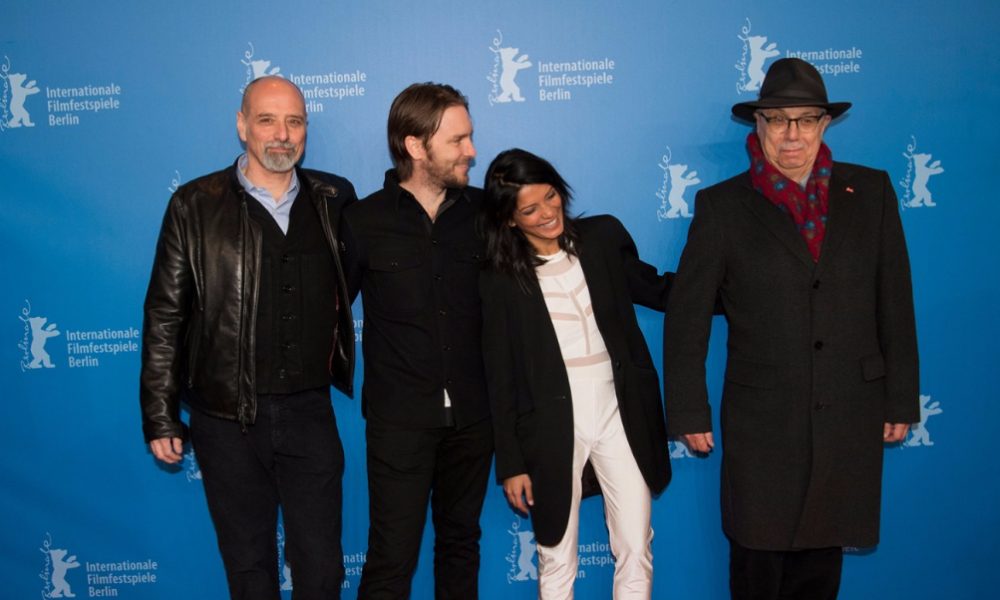
The Bomb is a documentary unlike any other, which chronicles the inception and implementation of nuclear weapons in our world. It is not simply a fact-based film but rather an experimental multimedia experience involving music from The Acid and an installation from United Visual Artists. After a successful premiere in the US at the 2016 Tribeca Film Festival, The Bomb makes its European premiere at the 67th Berlinale International Film Festival. We caught up with directors Smriti Keshari, Kevin Ford, and Eric Schlosser, as well as art director Stanley Donwood, to talk about inspirations, nuclear weapons and the ever-evolving nature of the project.
I saw your film yesterday afternoon. I was blown away.
Stanley Donwood: Good. Good. The aim was to make an impression.
I’ve never seen anything quite like it. How did you all decide on this subject matter as opposed to any other issue in the world today.
SD: My introduction to the wider world and political life was the anti-nuclear movement when I was about 14. My first experience of being pulled off the street by police was because of the stationing of American missiles in my part of England at the time. And that’s when you stop becoming a child and become aware of the wider world and your place in it, and your responsibilities. That was it for me. It’s so faded from everyone’s consciousness. The Berlin Wall came down, there was a policy of Perestroika, there was Glasnost, and the Soviet Union as it was collapsed and has risen again as something quite different. But the whole idea that nuclear weapons are there and that we should be really f**king scared of them has gone. So even though I was not experienced in the world of art directing, not even knowing what it was – I still don’t know what it is! – this was definitely something I wanted to be a part of.
Eric Schlosser: He’s just very good at telling you if it looks good or if it looks like shit. There’s not much in between.
You have good taste then. With so many collaborators, how was it with the division of power between you all?
Smriti Keshari: It was such a dream team.
ES: So far so good. We’re all on speaking terms. Now, there definitely were egos involved but the group mind would triumph over any individual. So it really was a collaborative thing. Last night when we were all out with the band I had this very strong sense that there’s a group of people who are certainly not doing this for the money. There’s a level of passion and care to the project and it’s just great to be a part of. I feel quite honoured and pleased to be involved.
You mentioned the band, The Acid. At what point did they come into play?
ES: We were originally making the film with temp music from a label based in Cologne, Germany called Kompakt, which is minimalist techno. A lot of it has a machine-like sound and it just seemed to fit really neatly with this film that’s about all these dangerous machines. Smriti had a friend who knew The Acid and we wanted to have a live component to this so we went to go see them play. We loved their music and we started talking to them about it. They cared about this subject too, so we brought them into the process. Some of the songs they had written before, but a lot of the songs they wrote for the film. It’s hard to imagine the film now without them because the music has just so infused the whole thing.
SK: It was really important from the beginning – music being such a strong part of all our lives – that we created an experience that was also aimed for the younger generation in a way that wasn’t telling you but that allowed you to experience it. In a way, we take people through emotions: the seduction of the machines, the perverse appeal of them, the propaganda behind them and the sheer destruction at the very heart of them. It was important to take people through this emotional arc and I think the music does that. It has so much magnitude and depth.
One of the most impactful moments is the silence during the montage of Japanese artwork depicting the post-bomb devastation. Who came up with that?
Kevin Ford: I feel 1000% that was Eric. He’s the maestro when it came to this. I remember when we worked on this section early on we tried a very minimal, minimal score. But anything that you did there just felt like you were making a commentary. The filmmakers in us couldn’t imagine just leaving it raw: no sound. Eric talked about the silence that came from the actual bomb blast: that the victims described there being an incredible silence after the attacks. That was when we said we’ve just got to have nothing there. And the band just lays down their instruments. It’s one of my favourite moments.
SK: Asking the band to have silence is sort of the antithesis of music making. When we sat down we talked about the sound of silence and the power of silence. It was inspired by John Hersey’s book Hiroshima. It was important for people to be there in complete silence. I mean, you could feel a pin drop in that moment. We listened to a lot of interviews and accounts of survivors of nuclear weapons and they talk about this white flash and then silence. Every noise is gone. I don’t think there’re really any words to describe that, what it must be like. It’s a very heavy moment.
The film has been presented in a couple of different forms and it was in a 360° setup at last year’s Tribeca Film Festival. What was it like to watch it transform?
KF: Yes! That was incredible. We worked on the film screen in our edit room, a small, average editing screen. But at some points we would plug in two other monitors and try to watch it on multiple screens, just to get some idea of what it would feel like as more of a multimedia experience. So we were always experimenting, even back in the editing, with trying to figure out different ways to watch it. To see it in New York in 360° was incredible. We were all standing on our feet and you didn’t really know where to look. Here, in Berlin, you’re just watching this one screen and it does something totally different to your attention. There were some people who had seen it in New York that asked if we had added new footage to the film and I said no, we didn’t change anything. But now because you’re sitting there just watching it you’re seeing things you never saw when it was in an installation and you were so busy looking around. I feel like wherever we take it, it’ll always be a little bit different depending on the environment.
ES: It’ll be on Netflix in the fall. It was interesting to see it here because we’d never seen it on a single screen with a band live that way. It’s a project that can be adapted to different venues and presented in all kinds of ways.
SK: When you’re doing something in a dark edit studio, you just never know if it’s going to work. The first time we ever did it was with an audience of 700 people [at Tribeca]. Which is really intense. It was also really important. So many documentaries and films are talking to you or they’re telling you. You have to experience this for yourself to really understand the sheer power of [nuclear weapons]. The film is certainly a test and it’s an experience and we always said if it works we knew it would work in a really visceral and deep way.
When did you realise The Bomb was meant to be this kind of non-traditional documentary?
SK: For quite some time I had been thinking about what it would be like if you put someone inside of a film and to challenge this directional method of viewing. It was around this time that I was reading Eric’s book Command and Control and it left a really deep and dark impact with me. It made me feel both sad and angry. Sad because I couldn’t believe we lived in this reality. We live in a world with upwards of 15,000 nuclear weapons and nine countries that have them and with Congress in the US approving a trillion dollars to modernise them. But I was more angry because I couldn’t believe that I didn’t know anything about it. During the Cold War and Cuban Missile Crisis, there was this sense of the awful nuclear cloud. That at any moment the world itself could likely end. And some could argue the danger is more great and yet there’s a complete denial. Nuclear weapons are out of sight and out of consciousness, they’re buried under ground. So it was important first that we created the emotional connection because you can’t be motivated by an abstract idea.
I liked how you described it in yesterday’s Q&A as “being inside contained chaos”.
SK: I’m happy to hear you picked up on that. That was actually one of the first emotions we would talk to all of the collaborators about: how do you get across the sense of contained chaos? It’s a theme that’s really present in Eric’s book and a theme that’s really present in nuclear weapons. In the music itself there’s this sense that at any moment, everything could fall apart. But it’s this sheer thing of luck that has kept it together. I think when you’re experiencing it it just feels like, “what’s going to happen next? How could this get any worse?”. And then it does.
Having seen it now a couple of different ways, do you have a preference?
KF: OK, I’ve done films for 20 years. I’ve never had an experience like what we had at Tribeca in New York. Now, had I never had that experience, last night would have been just as cool. And I was very careful looking around seeing were people bored, were their eyes drifting? Everyone’s eyes were just locked on the screen. That was pretty interesting. So I guess then it becomes [that] different people would have different preferences. Some people might prefer to sit. By the way, someone in New York passed out. That was terrible. They actually passed out. I think the lights and the music and everything just kind of got to them and they fainted and it created this whole panic moment during the film where no one knew what the hell was going on and they had to get this person out of there.
Do you worry the film is not going to have the same impact without the live band and without the sculpture installation?
KF: It sucks that we can’t have The Acid go to everyone’s living room, set up, and just run through it. That would be great. But in all seriousness, I’m not worried about it because we edited it on one screen, speakers, and pre-recorded music. And so it was almost like, if it could work there, then anything we’d do with it, live or spreading it or doing it in the multimedia way, would just be icing on the cake. We always kind of knew that at some point it would just be on one screen in someone’s living room – maybe they’re kicking back with a bong watching Netflix one night – and it’s just going to be that experience for that person. And then will the message and the emotional thing still work for them? I think it will.
What was your favourite moment in the film?
SK: There’re two. There is a moment when you see the assembled line of weapons and they’re just being carried like cars down an assembly line. I think that it’s one of those moments when you realise that any one of those could destroy entire existences, regions, and art and culture. It could destroy so many aspects of our society and, yet, there’s this disconnect with them when they’re in the assembly line. It’s always stayed with me and I imagine it from time to time what it must be like to be around these machines and how important it is for people to see that. To see this reality in the darkest of ways. The other is the Manhattan Project, the beginning of them, and how it’s this complete perversion of science. When this first started, this first weapon, it was all handwritten notes, blueprints. We took a lot of those originals and, through the work of Stanley [Donwood] and the Kingdom of Ludd, animated them to show that it started off as this simple idea that created the most dangerous machine ever, a machine that could destroy humanity. To think that we actually did that: it starts off so innocently and then it becomes this complete perversion.
Is there a particular person or group who you feel needs to see this film most?
SK: I would say that the film is aged for a younger generation that wasn’t alive during the Cold War and Cuban Missile Crisis; and I think we purposefully have done it with this incredible magnitude of a band to be able to reach an audience and not tell them what they should know but allow them to feel it for themselves, and to really go through that. I think it’s definitely for the generation to form that connection, that new sort of understanding of [nuclear weapons].
SD: If one person who sees it goes on and makes a difference then it’s worth it. Eric said yesterday the thing everyone can do is to get involved. Do your duty as a citizen of a civilised country to make your views known that this is not acceptable.
Last question: Can you tell me about the glowing structure at the end of the film?
ES: That was designed by Ben Kreukniet, he’s with United Visual Artists. In the 360° version, that glow was amazing because the room was filled with theatrical smoke so the glow just transfused the room.
SD: They’re sodium lights that until very recently we used all over Britain as street lamps. When you walk around at night everything is not monochrome: it’s yellow and black, no other colours. There are some great photos at the end of the New York one: it’s like the glow of the sun but with a kind of hint of darkness to it.
ES: We wanted to give people a warm, fuzzy feeling at the end [and] not leave people in total despair. The sun is just kind of a hopeful vibe.
SD: It’s the only nuclear engine we need.
Zoe Tamara
Read our review of The Bomb here.
For further information about the 67th Berlin Film Festival visit here.
Read more reviews from the festival here.


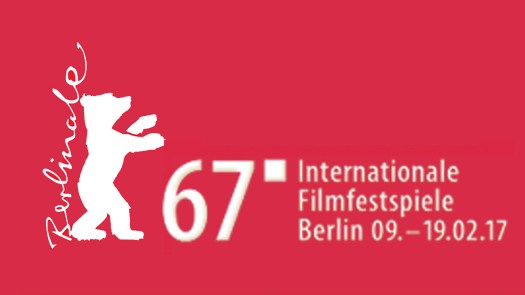
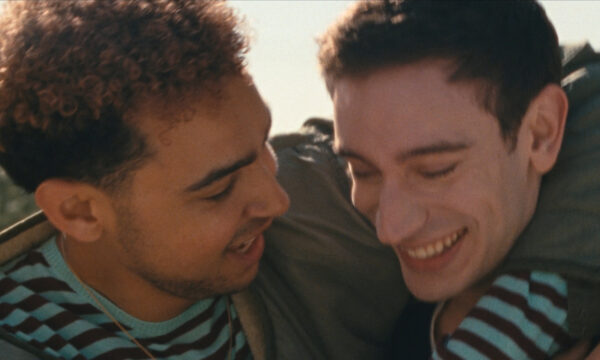
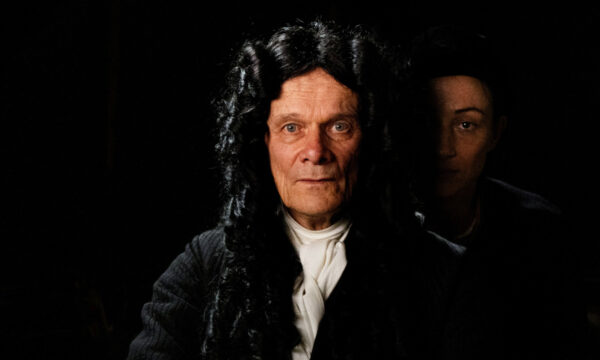
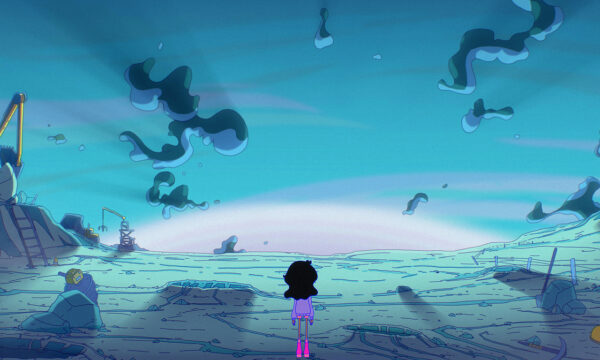
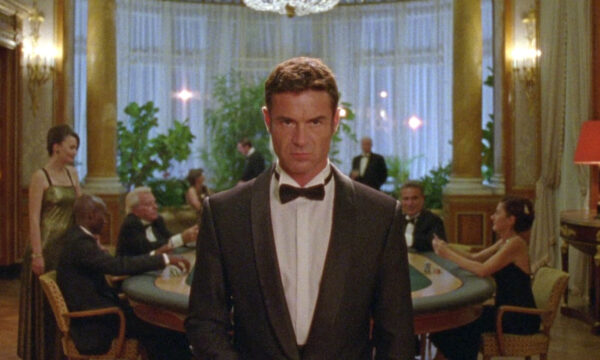
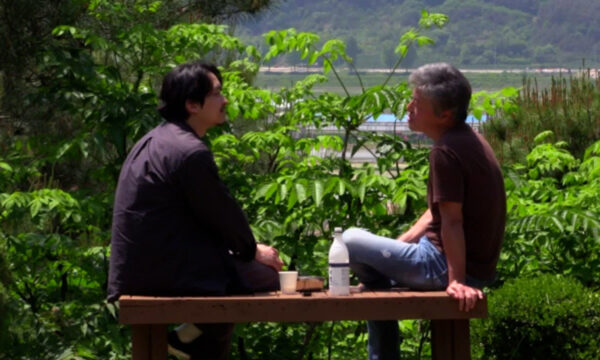
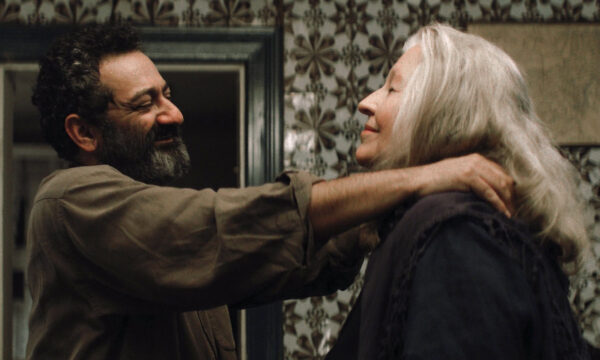
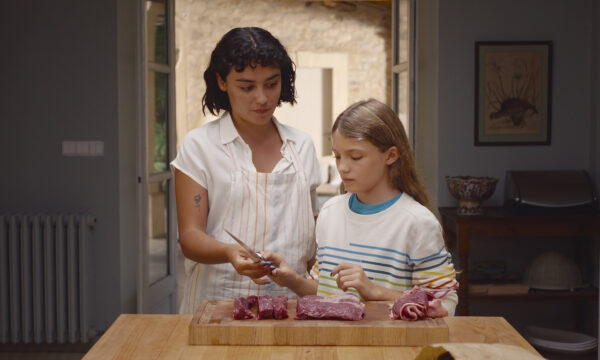
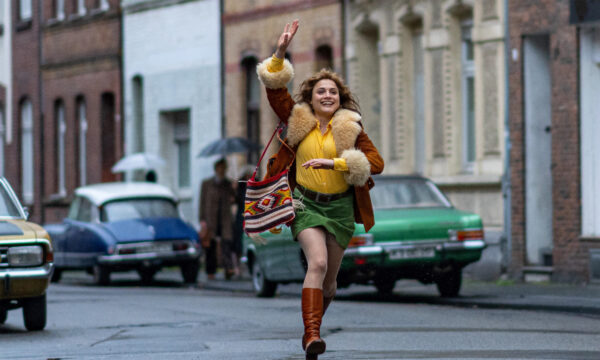
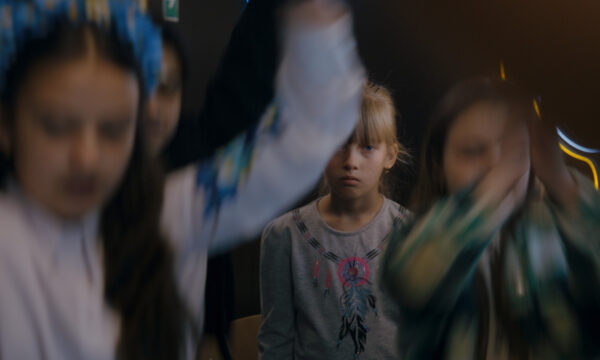
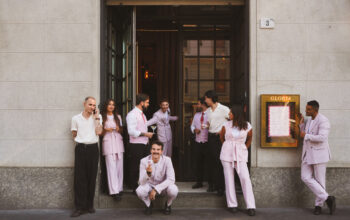
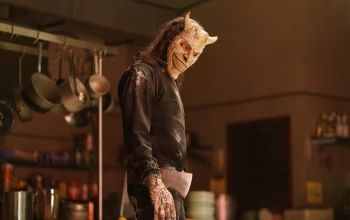
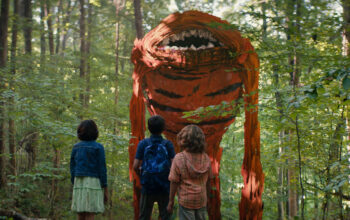



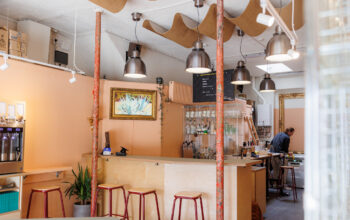



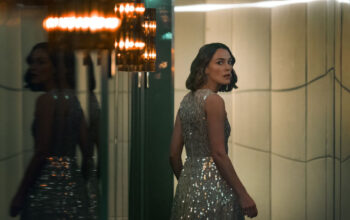
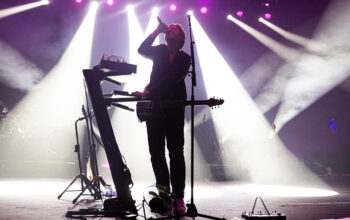
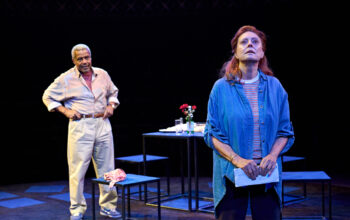
Facebook
Twitter
Instagram
YouTube
RSS